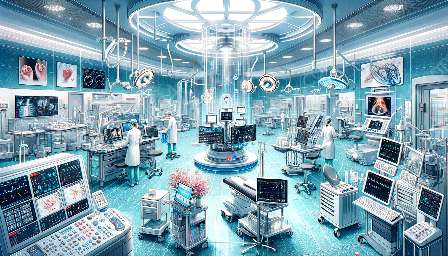As bioengineering and medical device technologies continue to evolve, understanding the complexities of biofluid mechanics remains a critical focus. The challenges in this field are multifaceted and demand innovative solutions to ensure the development of safe and effective medical devices.
Key areas of focus include understanding the behavior of biofluids within the human body, addressing biocompatibility issues, and enhancing the performance and durability of medical devices. This article will delve into the current challenges in biofluid mechanics for medical devices, providing insights into the intersection of bioengineering and medical technology.
The Complexities of Biofluid Mechanics
Biofluid mechanics involve the study of the flow of fluids within biological systems, including blood, interstitial fluid, and cerebrospinal fluid. These fluids exhibit complex behaviors that are not entirely predictable, particularly when interfacing with medical devices. Understanding the rheological properties, flow dynamics, and interactions of biofluids with medical devices is crucial for developing effective and safe biomedical technologies.
Challenges in Understanding Fluid-Device Interactions
One of the primary challenges in biofluid mechanics for medical devices is the complex interaction between biofluids and the devices themselves. When medical devices come into contact with biofluids, a range of dynamic processes and fluid behaviors occur, impacting device performance and biocompatibility. This interaction can lead to issues such as thrombosis, hemolysis, and foreign body reactions, which pose significant challenges for bioengineers and medical device developers.
Additionally, the design and placement of medical devices within the body must consider the impact of biofluid flow, pressure differentials, and tissue responses, further complicating the development and implementation of these devices.
Biocompatibility and Material Challenges
Ensuring that medical devices are biocompatible with the surrounding biofluids and tissues is a critical consideration in bioengineering. Biofluid mechanics play a crucial role in determining the compatibility of device materials with the biological environment. Challenges arise in developing materials that minimize adverse reactions, reduce inflammation, and maintain their structural and functional integrity in the presence of biofluids.
Furthermore, the long-term interaction between biofluids and device materials, including wear, corrosion, and degradation, presents ongoing challenges for enhancing the durability and lifespan of medical devices.
Opportunities for Innovation
While the challenges in biofluid mechanics for medical devices are significant, they also present opportunities for innovation and advancement in bioengineering. Addressing these challenges requires collaborative efforts across various disciplines, including bioengineering, fluid dynamics, materials science, and biomedical research.
Advanced Computational Modeling and Simulation
Advancements in computational modeling and simulation techniques offer opportunities to gain deeper insights into biofluid behavior and its interactions with medical devices. High-fidelity simulations can aid in predicting fluid-device interactions, optimizing device designs, and evaluating the performance of medical devices under diverse physiological conditions.
Biologically Inspired Design Solutions
Bioengineering draws inspiration from natural biological systems to develop innovative medical devices that are better suited to interact with biofluids. Biomimetic design approaches, such as mimicking the flow dynamics of physiological systems and utilizing biofriendly materials, present promising opportunities for overcoming biocompatibility challenges and improving device performance.
Integration of Sensor Technologies
The integration of advanced sensor technologies into medical devices allows for real-time monitoring of biofluid behaviors, providing valuable data for refining device performance and ensuring patient safety. By incorporating sensors for flow, pressure, and biological markers, medical devices can adapt to the dynamic nature of biofluid mechanics and respond to physiological changes.
Nanotechnology and Bioresponsive Materials
Nanotechnology offers novel opportunities for designing bioresponsive materials that can actively interact with biofluids. Nanoscale engineering enables the development of smart surfaces, drug delivery systems, and coatings that can modulate biofluid interactions, minimize adverse effects, and enhance the overall biocompatibility of medical devices.
Conclusion
The challenges in biofluid mechanics for medical devices present complex yet captivating opportunities for enhancing bioengineering and medical technologies. By addressing the multifaceted interactions between biofluids and devices, innovating in materials and design, and leveraging advanced technologies, the field of bioengineering continues to advance medical devices for improved patient outcomes and healthcare delivery.


